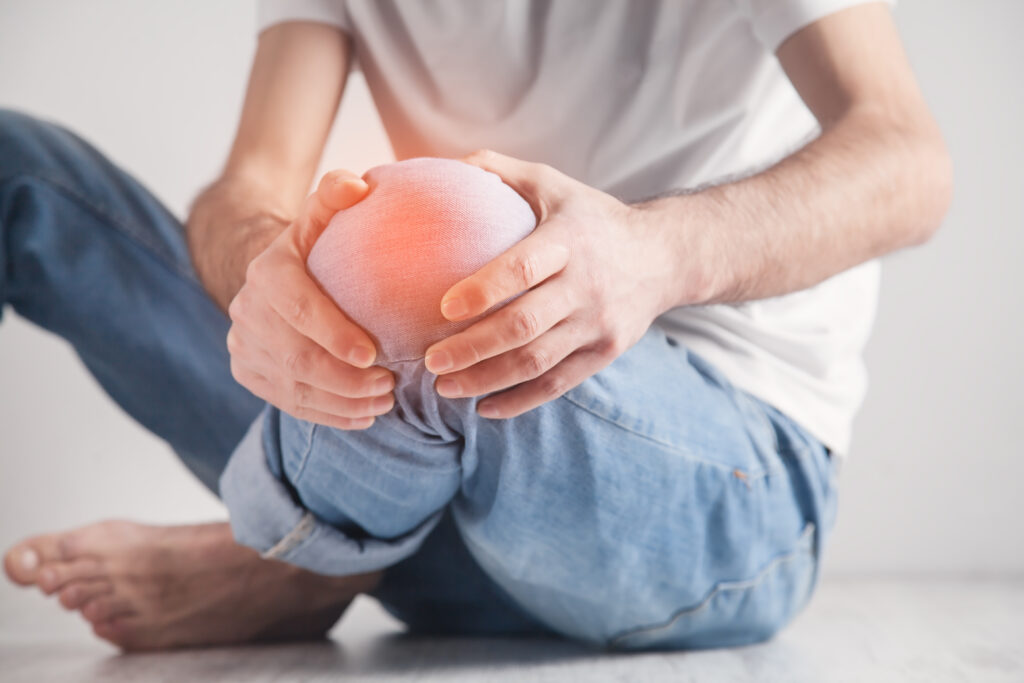If you're dealing with back pain in Calhoun, you might find that various treatment options can cater to your specific needs. From physical therapy aimed at restoring strength to chiropractic adjustments that enhance spinal alignment, there's a range of approaches available. You may also consider alternatives like acupuncture or massage therapy to ease discomfort. As you explore these options, it's crucial to understand which combination might work best for you. What if one treatment could greatly change your experience? Let's explore the possibilities.
Physical Therapy Options
When it comes to managing back pain, physical therapy options can be your best ally in recovery. These therapies are designed to help you regain strength, flexibility, and function while alleviating pain. By working with a qualified physical therapist, you'll receive personalized treatment tailored to your specific needs and condition.
One of the primary techniques you might encounter is manual therapy. This hands-on approach involves your therapist manipulating your spine and surrounding soft tissues to improve mobility and reduce discomfort.
You'll likely also engage in targeted exercises that focus on strengthening your core, improving posture, and increasing flexibility. These exercises can play a significant role in preventing future injuries.
Additionally, your therapist may incorporate modalities such as heat, ice, or electrical stimulation. These methods can help reduce inflammation, improve circulation, and alleviate pain.
Your therapist will guide you on when and how to use these modalities effectively.
Another essential aspect of physical therapy is education. Your therapist will teach you about your condition and how to manage your symptoms.
This knowledge empowers you to make informed decisions about your daily activities and lifestyle choices, ultimately aiding in your recovery.
Chiropractic Adjustments
Chiropractic adjustments can offer significant relief for your back pain by improving alignment and mobility.
You'll find a variety of techniques used during these adjustments, tailored to your specific needs.
If you're struggling with chronic pain or discomfort, you might be an ideal candidate for this form of treatment.
Benefits of Chiropractic Care
With a focus on holistic healing, chiropractic care offers substantial benefits for those suffering from back pain. By addressing the root causes of discomfort, chiropractic adjustments can help alleviate pain and improve overall mobility.
You'll likely notice an increase in your range of motion after just a few sessions, making daily activities feel less intimidating. Chiropractic care also promotes better posture, which is essential for preventing future back pain.
As your spine aligns correctly, the stress on your muscles and ligaments decreases, reducing the risk of injury. You'll also experience improved nerve function, as the adjustments relieve pressure on nerves, leading to better communication between your brain and body.
Moreover, many patients report enhanced relaxation and reduced stress levels following chiropractic treatments. This emotional benefit can considerably contribute to your overall well-being.
Additionally, chiropractic care often encourages a more active lifestyle, as you'll find it easier to engage in physical activities.
Incorporating chiropractic care into your treatment plan not only targets back pain but also supports your body's natural healing processes, helping you achieve long-term relief and improved quality of life.
Techniques Used in Adjustments
Typically, chiropractors use a variety of techniques to perform adjustments that target specific areas of discomfort in your back. One common method is the Diversified technique, where your chiropractor applies a quick thrust to realign your spine. You might hear a popping sound, which is normal and indicates gas is released from the joint.
Another technique is the Gonstead method, which focuses on precise adjustments using X-ray analysis. This method helps your chiropractor locate misalignments and apply targeted pressure for effective correction.
If you prefer a gentler approach, the Activator method uses a handheld instrument to deliver low-force impulses to specific areas, minimizing discomfort while still achieving realignment.
Flexion-distraction is another technique that involves a specialized table to gently stretch and flex your spine, helping relieve pressure on the discs. This method is particularly effective for those with herniated discs or sciatica.
Regardless of the technique used, your chiropractor will assess your individual needs and tailor the treatment to guarantee the best outcome.
With these methods, you can expect increased mobility and a reduction in pain, enhancing your overall quality of life.
Ideal Candidates for Treatment
If you're dealing with chronic back pain, you might be an ideal candidate for chiropractic adjustments. These treatments can be particularly effective if your pain stems from misalignments in the spine or musculoskeletal system.
If you've tried other treatments, like medication or physical therapy, without lasting relief, chiropractic care could offer the solution you're looking for.
Ideal candidates typically experience pain due to conditions like herniated discs, sciatica, or muscle strain. If your lifestyle includes repetitive movements, prolonged sitting, or heavy lifting, you're also more likely to benefit from adjustments.
Additionally, if you're seeking a more holistic approach to health and wellness, chiropractic care focuses on your body's natural ability to heal itself.
It's important to consult with a qualified chiropractor to assess your specific situation. They can help determine if adjustments are right for you, taking into account your medical history and current symptoms.
So, if you're ready to explore a non-invasive option for managing your back pain, chiropractic adjustments could be the key to restoring your comfort and mobility.
Don't hesitate to reach out and find out if this treatment is suitable for you.
Massage Therapy Benefits
Massage therapy offers a multitude of benefits for those suffering from back pain, providing both immediate relief and long-term improvements. When you engage in regular massage sessions, you might find that your pain lessens considerably, allowing you to return to activities you enjoy.
Here are some key benefits you can expect:
- Reduced muscle tension: Massage helps to alleviate tightness in the muscles, which can be a primary contributor to back pain.
- Improved circulation: Increased blood flow promotes faster healing and can help reduce inflammation in the affected areas.
- Enhanced flexibility: Regular sessions can improve your range of motion, making it easier to engage in daily tasks without discomfort.
One of the most appealing aspects of massage therapy is its holistic approach to healing. You're not just treating the symptoms; you're addressing the underlying causes of your back pain.
By releasing endorphins during a session, you're also enhancing your mood and reducing stress, which can play a vital role in your overall well-being.
Additionally, massage therapy can be tailored to meet your specific needs, whether you prefer deep tissue work or lighter techniques. This customization guarantees that you receive the most effective treatment for your back pain.
Acupuncture Treatments
Acupuncture treatments offer a unique approach to alleviating back pain by targeting specific points on the body to promote healing and restore balance. This ancient practice involves inserting fine needles into predetermined acupuncture points, which can help release tension, improve circulation, and stimulate the body's natural healing abilities.
When you undergo acupuncture, it's important to find a licensed practitioner who understands your specific back pain issues. They'll conduct a thorough assessment and develop a personalized treatment plan, ensuring that the needles are placed in areas that will provide maximum relief. Many patients report significant improvements in their pain levels after just a few sessions.
During an acupuncture session, you might feel a slight pinch or tingling sensation as the needles are inserted, but most people find the experience relaxing. Sessions typically last around 30 to 60 minutes, and you may leave feeling a sense of calm and well-being.
Research shows that acupuncture can be particularly effective for chronic back pain, helping to reduce inflammation and promote relaxation. It's a safe and drug-free alternative, making it an attractive option for those who prefer to avoid medications or invasive procedures.
If you're considering acupuncture as a treatment for your back pain, don't hesitate to talk to your healthcare provider. They can help you understand how it fits into your overall treatment plan and guide you toward qualified practitioners in Calhoun.
Embracing acupuncture may just be the step you need to find relief and improve your quality of life.
Pain Management Techniques
Effective pain management techniques are essential for those dealing with back pain, as they can provide relief and improve daily functioning. Finding the right method for you can greatly influence your quality of life.
Here are some popular techniques to evaluate:
- Medication: Over-the-counter pain relievers like ibuprofen or acetaminophen can help reduce inflammation and alleviate pain. In some cases, your doctor may prescribe stronger medications for more severe discomfort.
- Heat and Cold Therapy: Applying heat can relax tense muscles, while cold packs can reduce inflammation and numb sharp pain. Alternating between these two methods can offer immediate relief and enhance your recovery.
- Mindfulness and Relaxation Techniques: Stress can exacerbate back pain. Practices like meditation, deep breathing, or yoga can help you manage stress and, in turn, reduce pain.
Focusing on your breath or engaging in guided imagery can shift your attention away from discomfort.
Exercise and Rehabilitation
Engaging in regular exercise and rehabilitation is essential for managing back pain and promoting long-term recovery. When you incorporate physical activity into your routine, you strengthen the muscles that support your spine, improve flexibility, and enhance your overall posture. This proactive approach not only alleviates pain but also helps prevent future episodes.
Start with low-impact activities like walking, swimming, or cycling. These exercises are gentle on your back while still providing cardiovascular benefits. Aim for at least 30 minutes, several times a week, gradually increasing the duration and intensity as your body adapts.
Stretching exercises, particularly those targeting the lower back and hamstrings, can also be incredibly beneficial. They help relieve tension and improve mobility.
Incorporating strength training can further support your recovery. Focus on core exercises that engage your abdominal and back muscles. Planks, bridges, and pelvic tilts are excellent choices. Remember, proper form is vital, so consider working with a physical therapist or trainer who can guide you.
Rehabilitation programs often include a combination of exercises tailored to your specific needs. Participating in these programs can provide you with valuable techniques to manage pain and enhance your physical abilities.
Stay consistent, and listen to your body—if something doesn't feel right, don't hesitate to modify or seek professional advice.
Medication Alternatives
When it comes to managing back pain, exploring medication alternatives can provide you with effective options that don't rely solely on traditional pharmaceuticals.
Many individuals find themselves seeking solutions that minimize side effects or avoid dependency on strong medications. Here are a few alternatives you might consider:
- Topical Treatments: Creams and patches containing ingredients like menthol or capsaicin can provide localized relief without the need for oral medications.
- Herbal Remedies: Natural supplements such as turmeric, ginger, and devil's claw have anti-inflammatory properties and may help alleviate pain when used consistently.
- Acupuncture: This ancient practice involves inserting thin needles into specific points on the body, which may help reduce pain and improve overall function.
While these alternatives can be beneficial, it's crucial to consult with a healthcare professional before starting any new treatment.
They can help you evaluate which options are safest and most effective for your specific situation.
You might also want to combine these alternatives with other approaches, such as physical therapy or chiropractic care, for a more thorough treatment plan.
Lifestyle Modifications
Exploring medication alternatives is just one piece of the puzzle when it comes to managing back pain. Lifestyle modifications play a critical role in reducing discomfort and preventing future issues. You can start by evaluating your daily activities. Incorporating regular exercise into your routine strengthens your back muscles and improves flexibility. Activities like walking, swimming, or yoga can be particularly beneficial.
Pay attention to your posture, especially if you spend long hours sitting or standing. Make sure your workstation is ergonomically set up. Use chairs that support your lower back, and keep your feet flat on the floor. If you're lifting heavy objects, bend at your knees, not your waist. This simple change can drastically reduce strain on your back.
Diet also impacts your back health. A balanced diet rich in anti-inflammatory foods—like fruits, vegetables, whole grains, and lean proteins—can promote healing. Staying hydrated helps maintain spinal disc health, too.
Don't overlook the importance of sleep. Aim for a comfortable mattress and pillows that support your spine's natural curve. You might try sleeping on your side with a pillow between your knees for added support.
Lastly, manage stress through relaxation techniques like meditation or deep breathing. Stress can lead to muscle tension, exacerbating your pain.
Surgical Interventions
Surgery can be a viable option for individuals who haven't found relief through conservative treatments for back pain. If you're considering this route, it's vital to consult with your healthcare provider to evaluate your specific condition.
Surgical interventions may offer the relief you need, especially for issues like herniated discs, spinal stenosis, or degenerative disc disease.
Before diving into surgery, you should weigh the potential benefits against the risks. Here are some common surgical options you might discuss with your doctor:
- Discectomy: This procedure removes the portion of a herniated disc that's pressing on a nerve, alleviating pain and restoring mobility.
- Laminectomy: In this surgery, part of the vertebra is removed to relieve pressure on the spinal cord or nerves, often used for spinal stenosis.
- Spinal Fusion: This technique involves fusing two or more vertebrae to stabilize the spine, which can help reduce pain caused by movement between vertebrae.
While surgery might sound intimidating, many people find that it greatly improves their quality of life.
Keep in mind that recovery can take time, and physical therapy is often recommended post-surgery to strengthen your back.
Conclusion
In Calhoun, you have a range of effective treatments for back pain tailored to your needs. Whether you choose physical therapy to regain strength, chiropractic care for alignment, or massage therapy to ease tension, there's something that can work for you. Consider exploring acupuncture, medication alternatives, and lifestyle changes to enhance your recovery. If pain persists, surgical options are available. Remember, finding the right approach is key to regaining your comfort and mobility.



